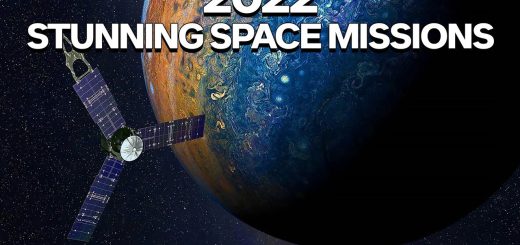NASA Psyche Mission: Journey to a Metal World
♪It’s a shame, but livingin the city, very rarelydo you get to see stars. – I feel like I have anew connection to themin a way that Ihaven’t before. – If I’m out in thedesert and I look upat the sky, you justsee millions and millionsof places that weshould be going. – It’s almost baked intoour DNA the desire togo and explore, right?That’s the whole reasonwhy we left the forestand then traveled acrossoceans, just to seewhat’s out there. – I was born in 1969,which is the year welanded on the moon. So, I am a space baby. – When I was a kid,there were guys drivingcars on the moon. They’redriving cars on the moon. That’s so cool, right?I wanna do that. – All the rocky planetsthat we know of all havegot a metal core in theircenter, and, especiallyfor the Earth it’s thesource of our magneticfield. We don’t know a lotabout our core, what we’velearned about it we’velearned indirectly,because we can’t go there. – It’s too hot. The pressure’s too high, ourinstruments would melt. Can’t drill a hole thatdeep in the Earth or otherplanets. Turns out, we canstudy a planetary core outin space because there’sthis one object, there’sone object, called Psyche. – 16 Psyche is anasteroid that orbits thesun out betweenMars and Jupiter. It is the only asteroidthat we are aware of, thatis 95% metal or more, andis really huge. It’s about200 kilometers acrossin one axis. – So, it’s about the sizeof Massachusetts. – It’s believed that itmay be a remnant, core ofan early planetesimal thatwas formed in the very,very earliest partsof the formationof the solar system. – And, after this planetstarted forming, and thismetal core formed insideof that, it collided withother bodies that thenstripped off the rockymantle, leaving thiscore in place. – The first thing thatcame, actually, was thetheory. Some people fromJet Propulsion Laboratorycontacted me and said,“We would like to plan amission that wouldtest your hypothesis. “- And that starts you downa road that takes years. So we wrote a proposal tosend a NASA spacecraft tovisit this, this big ballof metal. And then abouta year ago, Lindy getsa phone call. “You win!””Ahhh!” And then we’re alllike, “Oh my god, nowwe have to do it. “- Psyche gives us theopportunity to visit acore, the only way thathumankind can ever do,and it will be the firstmetal object thathumankind hasever visited. – We’ve been approved togo in August of 2022. So, we talked with ourmission design andnavigation team and, infact, they were able tocome up with what isprobably the most optimaltrajectory, doing aMars flyby. – Flies past Mars, givesus a gravity assist, usesthat propulsion system tothen slowly creep uptowards the end of 2025,getting there in early 2026. – SSL is building thesolar electric propulsionchassis. When we do themechanical, physical,integration of eachinstrument on thespacecraft, we’ll workhand-in-hand with each ofthe providers to get outto Psyche and do afull discovery mission. – We’ve figured out a wayfor many, many people tobuild something togetherso complicated no oneperson can understand it,but it all has to worktogether perfectly fordecades, without fail. – Just the fact that thesethings work at all is athrill. It’s just atestament to the engineersat JPL and the companiesthat we collaborate withthat they canbuild these things. – It’s exciting for me tobe able to me a womanwinning and leading a deepspace mission. The onlyprevious woman whocompeted, won, and led adeep space mission wasMaria Zuber, who was myfriend and mentor at MIT. And so my drive is to makeeveryone feel welcome, andto have every voice heard. We want as manyundergraduates as we can. We want to involve as muchas of the public as we can. We want people to feellike this is their mission. – You get that firstpicture back, and youknow, one of the firstthings that goes throughyour mind is “Oh, thankgod I didn’t leave thelens cap on. ” We will putour pictures out there assoon as they come down. So, we’ll discover at thesame time that the publicdiscovers. We’ll bescratching our heads andit’s like, “I don’t knowwhat’s going on,” at thesame time everybody elseis like, “Wow, what isthat?” I don’t know,let’s figure it out. – I did get to look atPsyche through an opticaltelescope in my backyard. Some wonderful colleaguesbrought over theirtelescope on a fortuitousnight. It’s a very, verytiny faint dot, and thatmade a bunch of us cry, tothink that we could sendsomething to investigatethat speck of light. – We can understand thisuniverse that we live in. We can explore it, we canlearn about it, and we canbe a part of somethingwhich is much bigger thanjust us or just thisplanet. We’ll see newthings when we visita world made of metal.













